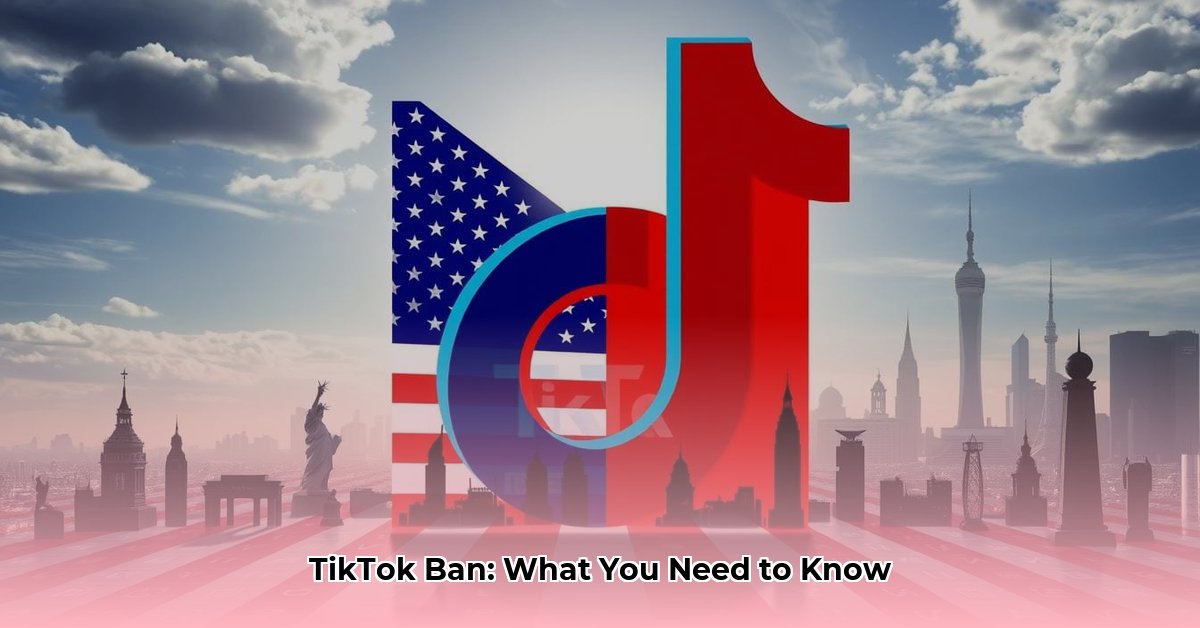Understanding the TikTok Saga
TikTok’s presence in the US has been a rollercoaster of legal challenges and political debate. This article provides a comprehensive overview of the situation, explaining the reasons behind the ban, its current status, potential impacts, and what the future might hold.
Why is TikTok Facing Scrutiny?
The core issue revolves around national security concerns stemming from TikTok’s Chinese ownership. The US government worries about ByteDance, TikTok’s parent company, being compelled by Chinese national security laws to share US user data with Chinese intelligence agencies. This data, encompassing user interests, location, and habits, could be a valuable resource for espionage, surveillance, and potential influence campaigns. There are also concerns about the potential for censorship, with the Chinese government possibly pressuring TikTok to remove content critical of their policies or promote content aligning with their agenda.
Data Privacy Concerns
The vast amount of data TikTok collects on its users raises concerns about potential misuse. This data could be used for targeted advertising, influencing user behavior, or even identifying and tracking individuals. The lack of transparency around Chinese law makes these concerns difficult to address.
Potential for Influence Operations
TikTok’s algorithm determines what content users see, raising concerns about potential manipulation. The algorithm could be tweaked to sway public opinion, promote certain viewpoints, or even interfere with elections. This potential for subtle influence is a significant concern for the US government.
Censorship Worries
The Chinese government’s history of controlling information raises concerns about censorship on TikTok. There are fears that the platform could be used to suppress dissenting voices, promote pro-China narratives, and limit access to information.
Legal Challenges and Free Speech
The TikTok ban has faced numerous legal challenges arguing that it infringes on First Amendment rights. While some courts have sided with TikTok, the Supreme Court has upheld the core tenets of the ban, prioritizing national security concerns. This highlights the difficult balance between security and freedom of expression.
| Concern | Potential Impact |
|---|---|
| Data Access by Chinese Govt. | Espionage, surveillance, targeted advertising, potential influence on user behavior |
| Censorship | Suppression of dissenting voices, promotion of pro-China narratives, limited information access |
| National Security | Potential threats to critical infrastructure, influence operations, data breaches |
The TikTok Ban Timeline
The TikTok ban has been a long and winding road. Here’s a timeline of key events:
| Date Range | Event |
|---|---|
| Mid-2020 | Trump administration attempts to ban new TikTok downloads. |
| 2021 | Biden administration pauses the ban efforts. |
| 2022-2023 | Various states ban TikTok on government devices. |
| Present | No nationwide ban in effect, but legal battles continue. |
Impact on Users and Businesses
The ban prevents new downloads and updates, effectively blocking access for most US users. This has significant implications for:
- Users: Loss of access to content and the ability to create or share. This may lead to migration to alternative platforms and decreased overall engagement.
- Businesses: Loss of a key marketing and sales channel, impacting brand visibility and revenue. Businesses are exploring alternative platforms and adjusting marketing strategies.
- Influencers: Loss of income from brand deals and sponsorships, and a decline in audience reach. Influencers face the challenge of rebuilding their presence on other platforms.
The ban’s long-term economic and social media landscape impacts are still unfolding. It may lead to a shift in platform dominance, the emergence of new platforms, and evolving trends in content creation.
What’s Next for TikTok?
The future of TikTok in the US remains uncertain. Ongoing legal challenges, potential legislation, and negotiations between TikTok and the US government could all shape the outcome. Possible scenarios include stricter data security regulations, increased transparency requirements, or a nationwide ban.
Staying Informed
This situation is constantly evolving. Stay up-to-date by checking reputable news sources, government websites and following legal developments. The TikTok story is far from over, and understanding the complexities at play is crucial.
It’s important to note that while concerns about data security and potential influence are valid, the situation is complex. Ongoing research and debate are necessary to fully understand the risks and potential solutions. The future of TikTok in the US likely depends on balancing national security with freedom of expression and the ongoing evolution of international data security standards.







